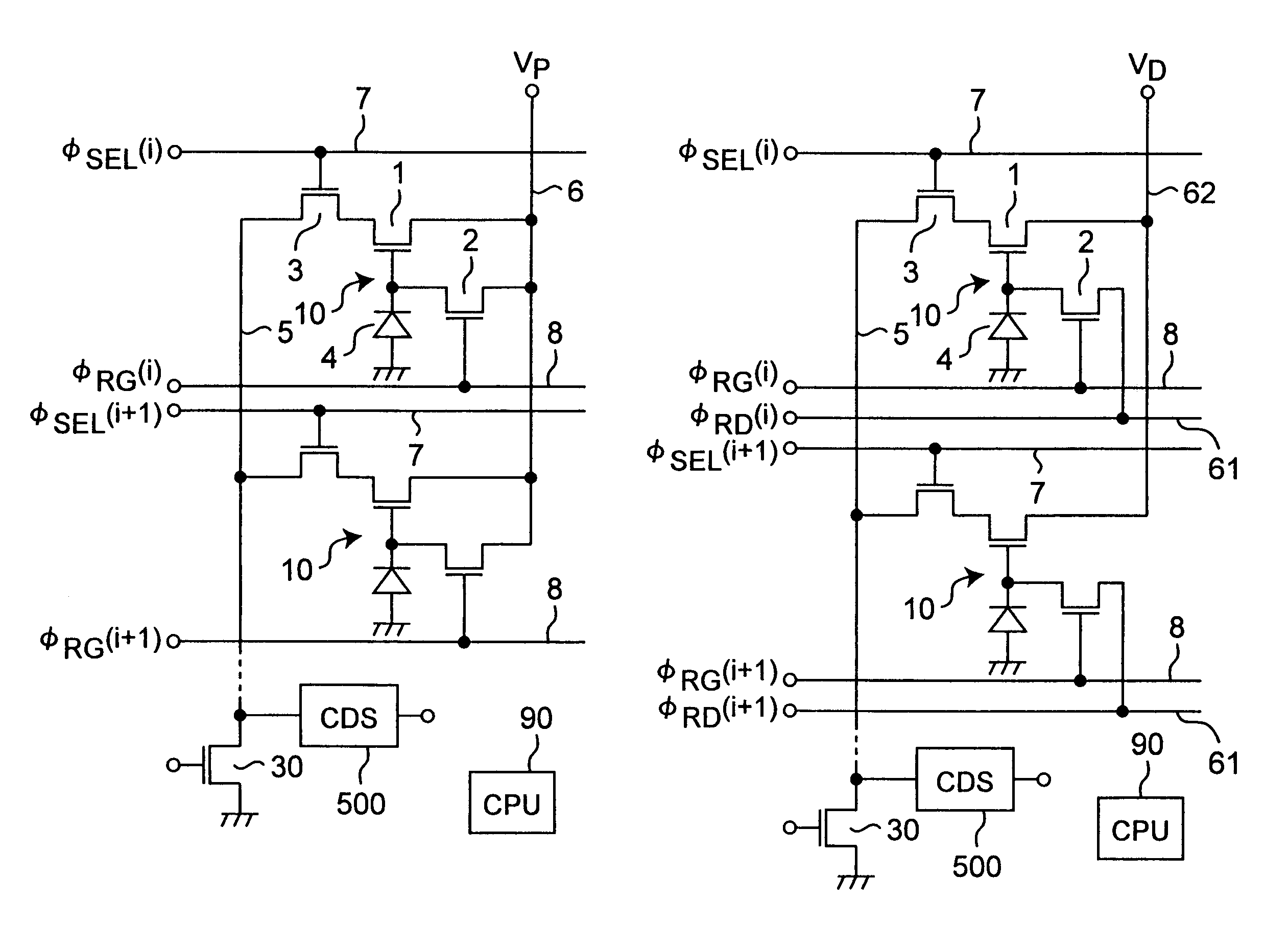Amplification-type solid-state image pickup device incorporating plurality of arrayed pixels with amplification function
a solid-state image and arrayed-pixel technology, applied in the field of amplification-type solid-state image pickup devices, can solve the problem of image retention for as long as time, and achieve the effect of reducing both reset noise and image retention, and simple constitution
- Summary
- Abstract
- Description
- Claims
- Application Information
AI Technical Summary
Benefits of technology
Problems solved by technology
Method used
Image
Examples
first embodiment
[0126](First Embodiment)
[0127]FIG. 1A shows the circuit constitution of an APS (Active Pixel Sensor)-type two-dimensional image sensor in one embodiment of the present invention. Although the image sensor incorporates a plurality of pixels disposed in matrix form, only two pixels 10 of two rows by one column are shown for easier understanding. Row direction corresponds to horizontal direction while column direction corresponds to vertical direction.
[0128]As shown in FIG. 2, each pixel 10 is composed of one photodiode (PD) 4 serving as a photon-electron conversion region, and three N channel-type MOS transistors (Tr) 1, 2, 3 (PD+3Tr type), more specifically, a MOS transistor for signal amplification 1, a MOS transistor for reset 2, and a MOS transistor for pixel selection 3.
[0129]The anode of the photodiode 4 is grounded and the cathode is connected to the MOS transistor for signal amplification 1. The MOS transistor for signal amplification 1 amplifies a signal representing a potent...
second embodiment
[0156](Second Embodiment)
[0157]In the aforementioned method in which the soft reset operation and hard reset operation are combined, image retention and reset noise are avoidable. However, there is the possibility that linearity of output signals with respect to incident optical signals might be damaged.
[0158]As shown in FIG. 5A and FIG. 5B in details, due to a sub-threshold current during the third reset period TR3, the photodiode potential ψPD (A) immediately after the period TR3 in the preceding frame F(n) becomes lower by ΔV1 (see FIG. 6) than the channel potential ψRG (H) obtained by the reset gate potential RG (H). The photodiode potential immediately before the first reset period TR1 in the noticed frame F(n+1) drops due to the charges generated by an incident optical signal during optical signal storage period TCHG after the third reset period TR3 in the preceding frame F(n). If the potential drop amount is not less than ΔV1, then the photodiode potential immediately after t...
PUM
 Login to View More
Login to View More Abstract
Description
Claims
Application Information
 Login to View More
Login to View More - R&D
- Intellectual Property
- Life Sciences
- Materials
- Tech Scout
- Unparalleled Data Quality
- Higher Quality Content
- 60% Fewer Hallucinations
Browse by: Latest US Patents, China's latest patents, Technical Efficacy Thesaurus, Application Domain, Technology Topic, Popular Technical Reports.
© 2025 PatSnap. All rights reserved.Legal|Privacy policy|Modern Slavery Act Transparency Statement|Sitemap|About US| Contact US: help@patsnap.com



